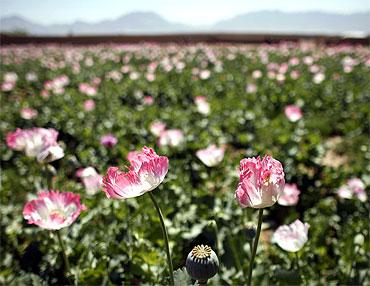| Tweet | | |
Join our Facebook page by clicking here!
See the 1461's comprehensive full list of the Obama Administrations Memorandum here.
Don't forget to keep an eye on the 1461's comprehensive list of President Obama's Executive Orders.
Why is the Presidential Memorandum so important and why is the 1461 tracking them?
In January of 2009 the Presidential Memorandum was given the same power as the Executive Order by the Department of Justice in a statement by U.S. Assistant Attorney General Randolph D. Moss.
In effect, it suddenly became the equal to the Executive Order with the same power.
MEMORANDUM FOR THE SECRETARY OF STATE
"SUBJECT: Presidential Determination on Major Illicit Drug Transit or Major Illicit Drug Producing Countries for Fiscal Year 2013
Pursuant to section 706(1) of the Foreign Relations Authorization Act, Fiscal Year 2003 (Public Law 107-228)(FRAA), I hereby identify the following countries as major drug transit and/or major illicit drug producing countries: Afghanistan, The Bahamas, Belize, Bolivia, Burma, Colombia, Costa Rica, Dominican Republic, Ecuador, El Salvador, Guatemala, Haiti, Honduras, India, Jamaica, Laos, Mexico, Nicaragua, Pakistan, Panama, Peru, and Venezuela.
A country's presence on the majors list is not necessarily an adverse reflection of its government's counternarcotics efforts or level of cooperation with the United States. Consistent with the statutory definition of a major drug transit or drug producing country set forth in section 481(e)(2) and (5) of the Foreign Assistance Act of 1961, as amended (FAA), one of the reasons major drug transit or illicit drug producing countries are placed on the list is the combination of geographic, commercial, and economic factors that allow drugs to transit or be produced, even if a government has carried out stringent narcotics control law enforcement measures.
Pursuant to section 706(2)(A) of the FRAA, I hereby designate Bolivia, Burma, and Venezuela as countries that have failed demonstrably during the previous 12 months to adhere to their obligations under international counternarcotics agreements and take the measures set forth in section 489(a)(1) of the FAA. Included in this report are justifications for the determinations on Bolivia, Burma, and Venezuela, as required by section 706(2)(B) of the FRAA.
I have also determined, in accordance with provisions of section 706(3)(A) of the FRAA, that support for programs to aid Bolivia, Burma, and Venezuela is vital to the national interests of the United States.
Afghanistan produces approximately 90 percent of the world's illicit opium. Nearly all of this cultivation occurs in four southern and western provinces. Instability in the area allows criminal networks, insurgent groups, and illicit cultivation and drug production to thrive. While Helmand Province continues to be the largest poppy-cultivating area, the United States and the United Nations Office on Drugs and Crime (UNODC) estimate that cultivation in Helmand decreased between 35 and 39 percent, respectively, since 2008, to roughly 63,000 hectares.
The strategic objective of Afghanistan's Ministry of Counter Narcotics, as stated in its National Drug Control Strategy, is "to create a secure environment for a healthy society with a strong licit economy, through evidence-based policy-setting, effective coordination and full accountability to the people of Afghanistan and our government." The ongoing Good Performer Initiative, now in its sixth year, rewards provinces for successful counternarcotics performance. In 2011, 22 of Afghanistan's 34 provinces qualified for $19.2 million in development projects as the result of their poppy reduction efforts.
Afghanistan's gains remain fragile. Reducing illegal cultivation and trafficking are closely linked to broader economic opportunity, security, and the ability of the Afghan government to project the rule of law. International support for the Afghan National Drug Control Strategy, including from the United States, is designed to bolster the country's drug control undertakings and is directly tied to the success of the country's wide-ranging national objectives to improve peace, security, and economic development.
This year, the Caribbean was examined for its relative importance as a transit zone for illegal substances destined for U.S. markets. Without factoring in illegal maritime and air drug smuggling believed to be destined for Europe and beyond, approximately 5 percent of all drugs destined for the United States are estimated to pass through the majors list countries of The Bahamas, Dominican Republic, Haiti, and Jamaica. As traffickers constantly reorder their routes and methods, the United States and other donors continue to believe that countering the drug trade in the Caribbean is in our national interest, as well as that of the countries themselves. Without the rule of law, well-run institutions, and effective drug interdiction, the viability of the broad range of national and regional goals adopted by Caribbean countries is threatened.
European, Canadian, and U.S. bilateral drug control support, as well as the Caribbean Basin Security Initiative, contribute to the region's ability to prevent and address drug trafficking and related violence and crime in the Caribbean. Similarly, key undertakings by the Organization of American States and UNODC in the region -- especially those aimed at bringing long-term stability to Haiti -- are an important part of the policy and assistance mosaic for smaller countries seeking to build on the successes of broad regional policies and programs.
United States analysts estimate that approximately 95 percent of illegal drugs cultivated and produced in South America destined for the United States are smuggled through Central America, Mexico, and the Eastern Pacific, primarily using maritime conveyances and illegal air flights. In response, the
United States launched the Central America Regional Security Initiative (CARSI) in 2008, which was further expanded when I announced the Central America Citizen Security Partnership in San Salvador in March 2011. Through CARSI and the Partnership, the United States has focused its crime prevention, counternarcotics, law enforcement and security assistance, and bolstered rule of law institutions in Central America. The region also has strengthened cooperation through the Central American Integration System (SICA) to promote citizen security and other programs. Multilateral cooperation to stem the flow of precursor chemicals from as far away as China that are used to produce illegal methamphetamine in Central America is an important component of SICA's unprecedented regional cooperation. Similar objectives are achieved through U.S. support for Mexico's drug control policies and programs under the Merida Initiative.
Several other countries were evaluated for inclusion in this year's list, but are not determined to be major drug transit and/or major illicit drug producing countries. For example, Canada has taken effective steps to stem the flow of synthetic MDMA (ecstasy) across its shared border with the United States, a problem of growing concern during the past several years. The country continues its robust efforts to combat the production, distribution, and consumption of various illegal drugs. As part of its 5-year National Anti-Drug Strategy, Canada has rolled out new initiatives specifically intended to fight the trafficking of marijuana and synthetic drugs. As detailed in the March 2011 report on precursors by the International Narcotics Control Board, Canada broadened its existing Controlled Drugs and Substances Act to prohibit any person from possessing, producing, selling, or importing material intended to be used in the illegal manufacture or trafficking of methamphetamine or ecstasy. The United States has al
so collaborated with Canada on a National Northern Border Counternarcotics Strategy that defines in detail the wide range of initiatives underway to combat all phases of drug trafficking. Bilateral initiatives focus on programs to stem the two-way drug trade between Canada and the United States.
You are hereby authorized and directed to submit this determination, with its Bolivia, Burma, and Venezuela memoranda of justification, under section 706 of the FRAA, to the Congress, and publish it in the Federal Register.
BARACK OBAMA"

Join the conversation and post your thoughts in the comments!
Read the 1461 Comment Guidelines.
1461 is currently being read by over 500,000 People and spreading!
Help the 1461 continue to Grow and spread the truth - invite your friends and family to join the 1461 and learn the truth rather than BS!


No comments:
Post a Comment
Welcome to the 1461. Join the conversation.
If this is your first visit - read the Comment Guidelines
Remember you have a Constitutionally protected right to anonymous political free speech, not a free pass to be an ass.